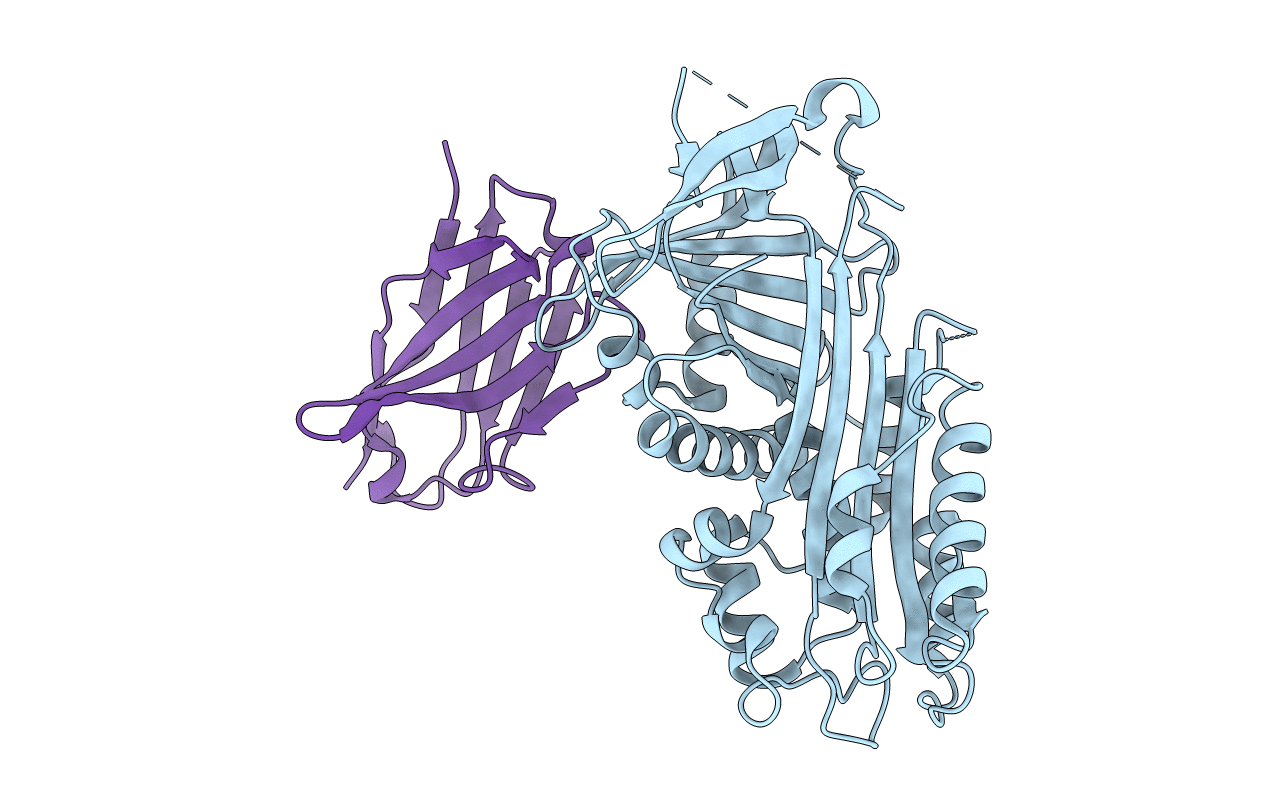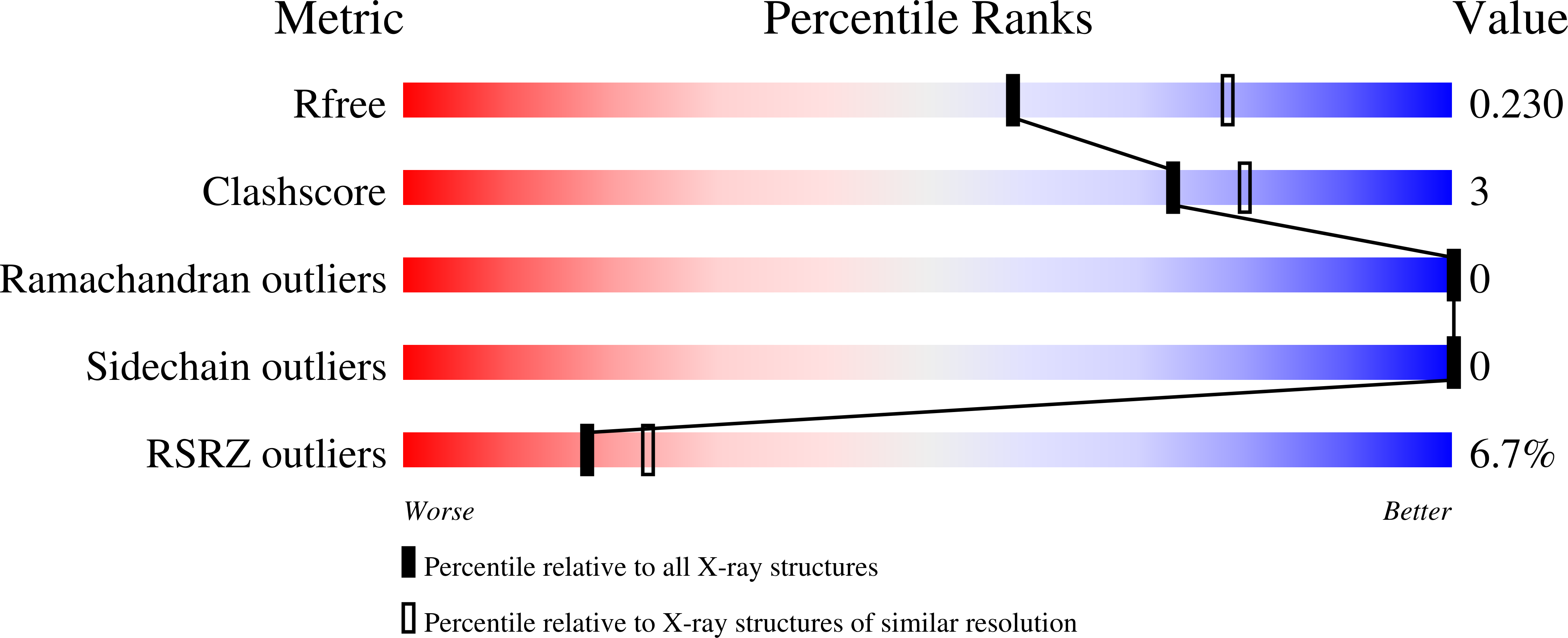
Deposition Date
2018-06-25
Release Date
2020-01-01
Last Version Date
2024-01-17
Entry Detail
PDB ID:
6GWQ
Keywords:
Title:
Crystal Structure of Stabilized Active Plasminogen Activator Inhibitor-1 (PAI-1-stab) in Complex with an Inhibitory Nanobody (VHH-2g-42)
Biological Source:
Source Organism:
Homo sapiens (Taxon ID: 9606)
Vicugna pacos (Taxon ID: 30538)
Vicugna pacos (Taxon ID: 30538)
Host Organism:
Method Details:
Experimental Method:
Resolution:
2.32 Å
R-Value Free:
0.23
R-Value Work:
0.20
R-Value Observed:
0.20
Space Group:
C 1 2 1


